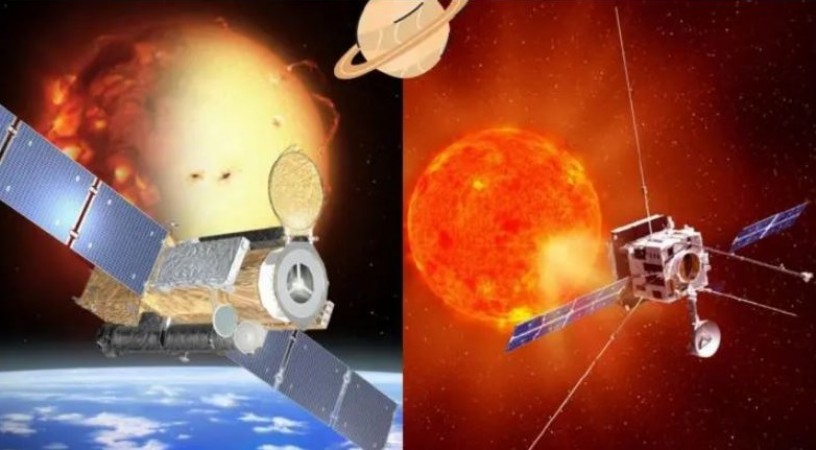
KOLKATTA: Anticipations among scientists are building as they prepare to unlock novel revelations about the past, present, and future of the Sun. Their focus rests on the forthcoming analysis of data to be amassed through India's pioneering solar expedition, Aditya-L1. Set to launch on September 2 under the auspices of ISRO, this mission holds the promise of reshaping our understanding of Earth's climatic evolution in the coming decades and centuries.
The crux of this endeavor lies in Aditya-L1's ascent to the First Lagrangian point, stationed approximately 1.5 million kilometers away from Earth. It's at this juncture that the mission is poised to collect a wealth of data, much of which will mark its inaugural transmission from a space-based platform. Spearheaded by Prof. Dipankar Banerjee, a solar physicist, and his team, who initially conceived of this mission over a decade ago, this venture is as audacious as it is groundbreaking.
"The Sun, our nearest star, is the bedrock of life on Earth. All energy we harness stems from its brilliance. Understanding whether it will perpetuate its current radiation output or undergo transformations is pivotal," underscores Banerjee. He underscores the potential repercussions: "Any reduction in solar energy emission could profoundly impact our global climate."
The prolonged scrutiny of the Sun's activity from the Lagrangian vantage point holds the key to unveiling the Sun's enigmatic history. Banerjee, who also serves as the Director of the Aryabhatta Research Institute of Observational Sciences (ARIES), a government-affiliated autonomous body, illuminates the recurring patterns. "The Sun undergoes an 11-year solar cycle, marked by shifts in its magnetic activity. Additionally, sporadic violent alterations in its magnetic field cause immense surges of energy, known as solar storms."
It's within the solar corona, the outermost atmosphere, that potent magnetic fields corral searing plasma. Periodically, this plasma is released in the form of gas and magnetic field-laden pockets termed coronal mass ejections. "As these ejections traverse the interplanetary expanse, they radiate in all directions. Not only do satellites bear the brunt of these ejections, but other celestial bodies, including the Moon, also experience their impact. Predicting space weather is vital to safeguarding our space assets, and Aditya-L1's data is poised to refine these predictions," he underscores.
The ISRO's spacecraft also holds the potential to unravel Earth's climatic narrative, as solar activities intimately influence our atmosphere. "Numerous ice ages have graced Earth's history, yet comprehending their genesis, especially the Sun's role, remains an enigma," Banerjee adds.
Aditya-L1 embarks on an unprecedented mission: capturing the corona's magnetic field measurements for the first time from space. "Moreover, we'll glean insights into near ultraviolet flux emitted by the Sun, characteristics of the solar wind (particles emitted from the Sun's outer atmosphere), and a host of other queries," Banerjee adds.
This ambitious undertaking will integrate ground-based telescopes with Aditya-L1's payloads. From the advantageous Lagrange 1 perspective, these observations will converge to deliver a holistic depiction of solar activity, particularly the tempestuous solar storms. Collaborative findings from ARIES, Kodaikanal, and Udaipur observatories will prove invaluable in deciphering these phenomena.
"As Aditya-L1's scientific instruments kick into gear, our focus will shift to data analysis once the validation phase concludes. A dedicated team will helm this scientific inquiry," Banerjee concludes.
Lagrangian points epitomize the equilibrium of gravitational forces between two bodies, enabling spacecraft to remain in suspended animation. Within this context, the L1 point holds particular prominence for solar observations, a breakthrough realized by mathematician Joseph Louis Lagrange.
The looming endeavor is met with eagerness, encapsulated by Banerjee: "A pivotal moment dawns as we embark on a dual journey—studying the Sun from a comprehensive orbital observatory and through terrestrial observatories. This leap in Indian astrophysics and solar physics augments our perspectives and capabilities. Exciting prospects await."
ISRO Concludes Launch Rehearsal and Vehicle Checks for Aditya-L1 Mission
Aditya L-1: How Sun Study Benefits Humanity and the Globe
ISRO Plans Aditya-L1 Mission Launch to Investigate the Sun on September 2nd